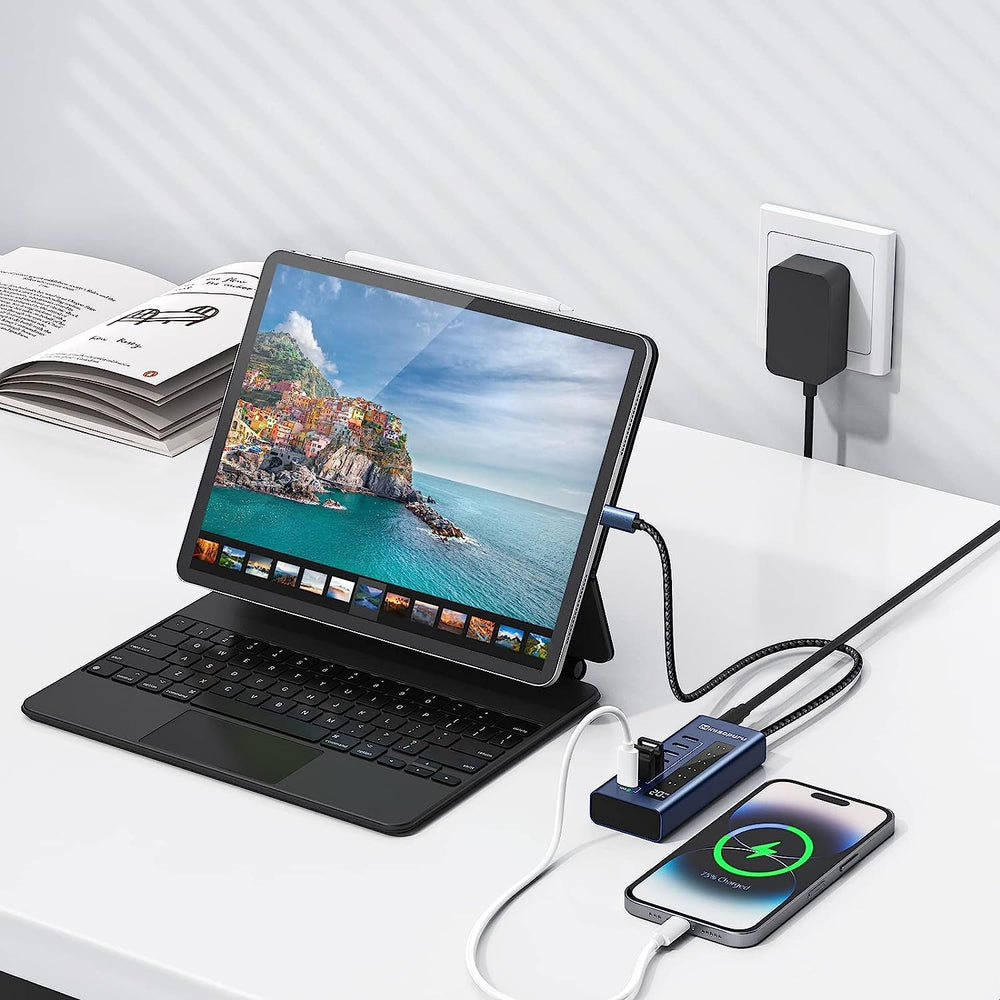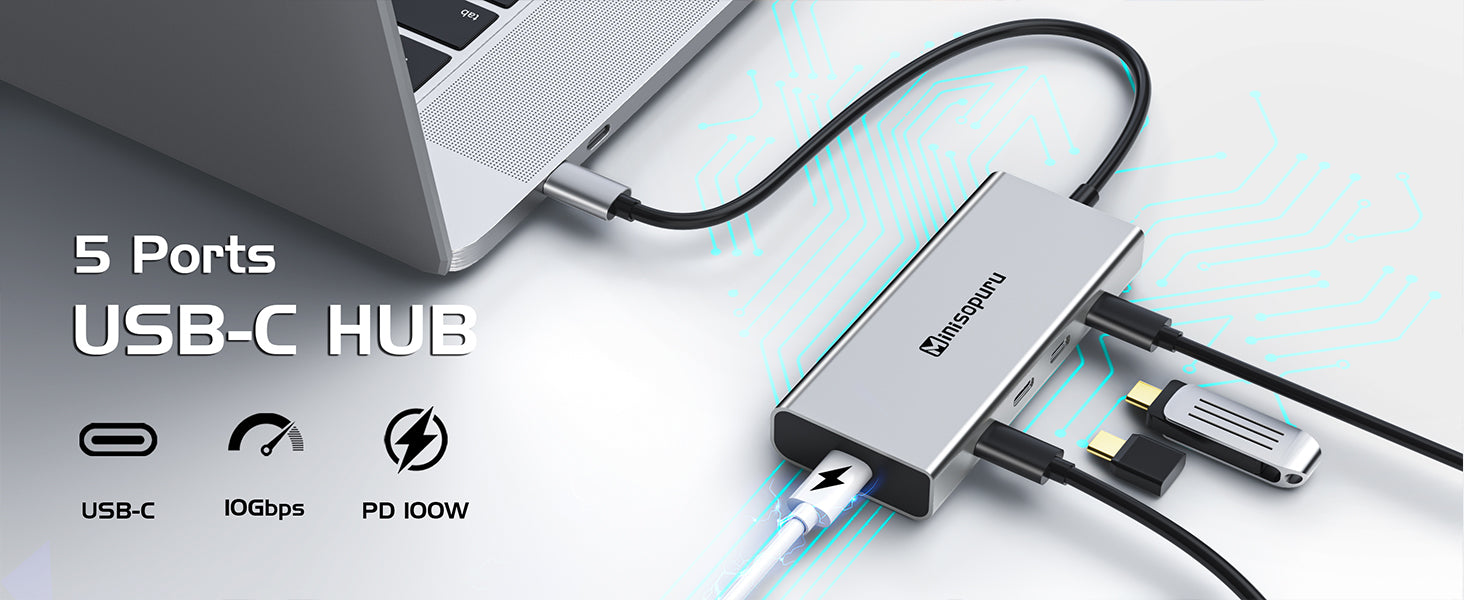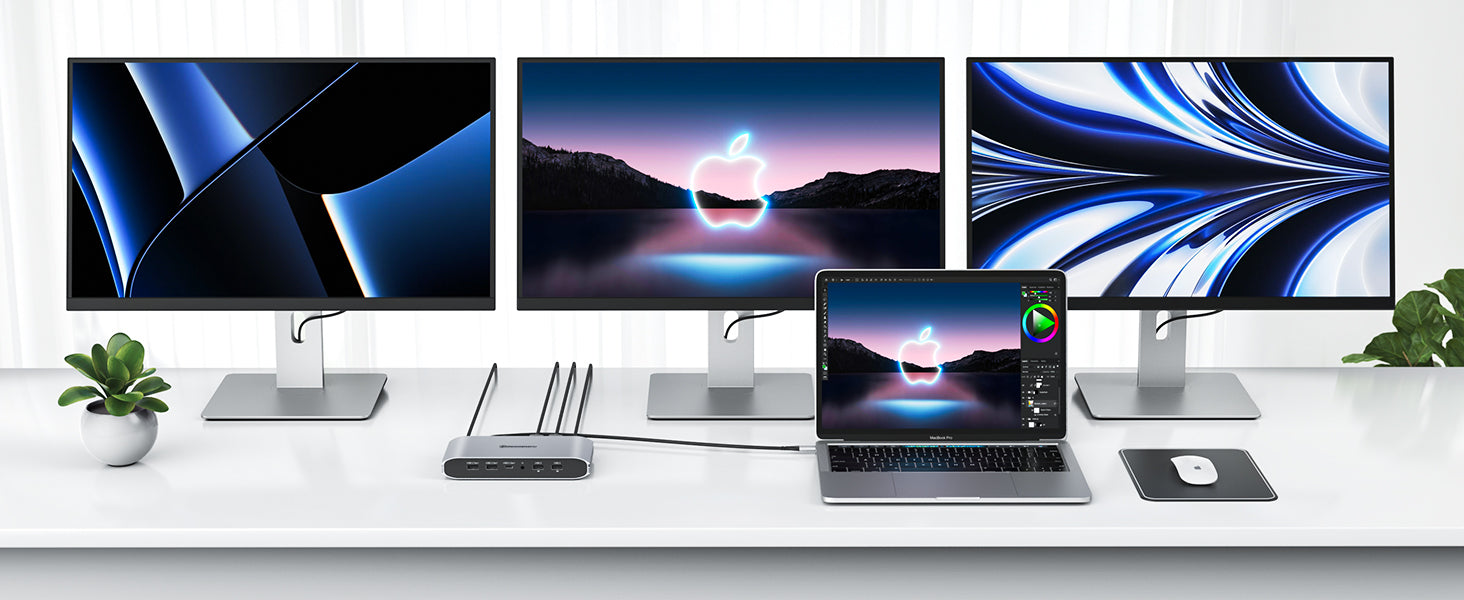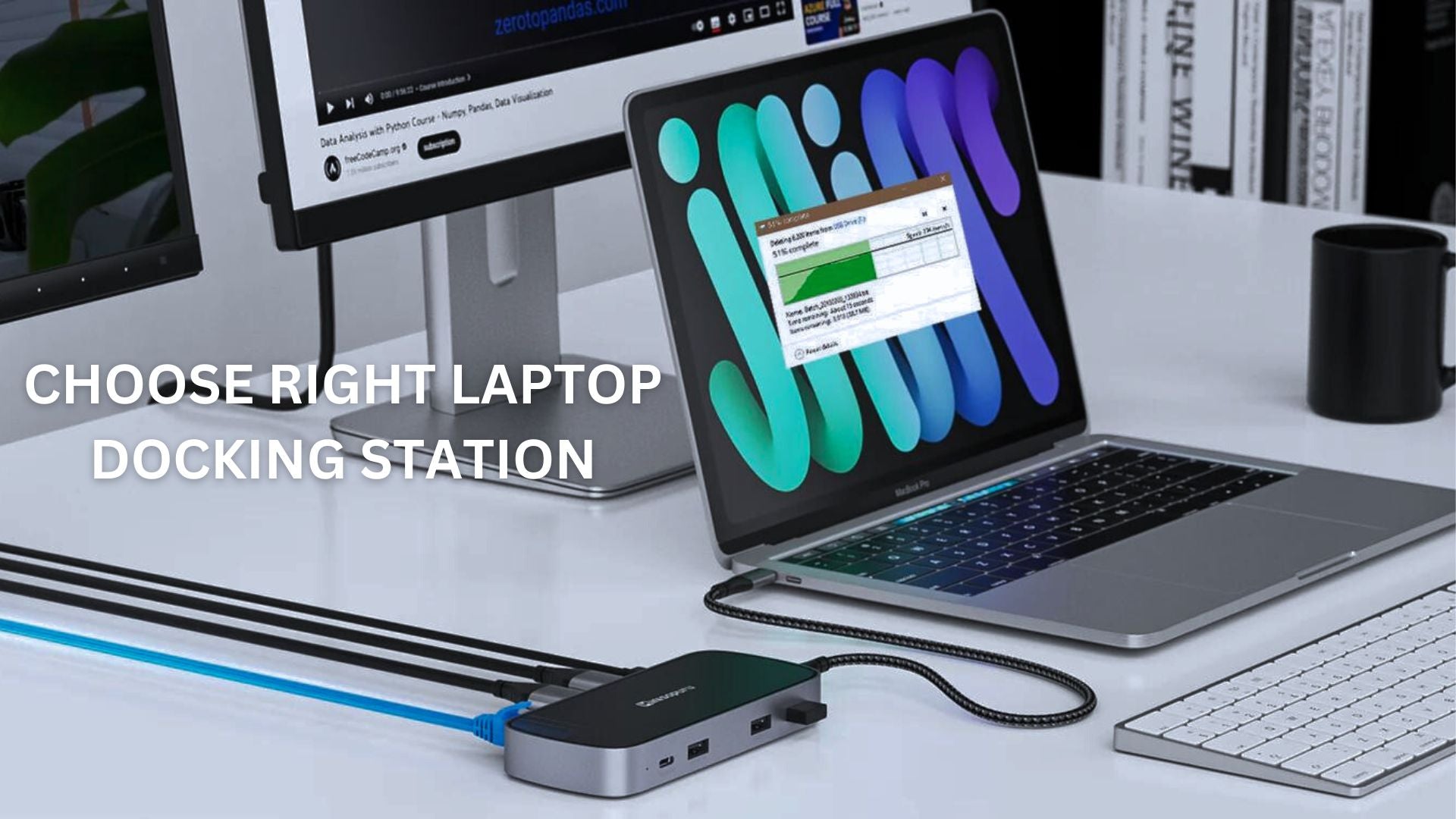Are you done dealing with a cluttered workspace, tangled cables, and limited options for connectivity? Imagine a world where you will transfer data quickly, enjoy stunning visuals, and effortlessly connect all your devices on a single sleek monitor. Don't imagine anymore; welcome to the world of USB-hub monitors – where ease meets with productivity in the most attractive way possible. This blog will walk you through the myriad benefits of investing in a USB-C hub monitor.
A USB- hub monitor has USB-C ports built into it. Any laptop with a USB-C port or a USB-C adapter may be connected to the display with only one connection for quick access to all the necessary tools to be as productive as possible. One cable replaces all of your cables, including the ones that come with USB hubs, external docking stations, and the mess of wires that goes with them.
With the ability to supply enough power to run devices as resource-hungry as laptops and transport data at breakneck speeds, USB-C is well on its way to becoming the industry standard connection for many different electronic equipment.
Streamlined Connectivity
With a USB-hub monitor, you may power your display through a laptop or vice versa. In addition, not having to bother about a second power wire or converter makes streaming from a computer to your monitor much simpler. It's also an excellent feature for the USB-C monitors introduced in business environments because the setup procedure is greatly simplified.
The most modern USB type-C displays can connect and charge up to six devices. That means all six are supported, whether you want to daisy-chain them one after another or link them via a multiport adaptor. It offers a top tier level of convenience for all users, including families and office employees, and is especially useful for individuals who share a media room.
A multiport adaptor or a USB-C-specific workspace dock is a fantastic way to organize and quickly access all of your gadgets and act as a hub for charging.
Single-Cable Solution
Another significant benefit of a standardized, single-cord solution for data and electricity is its opportunities for device charging and cord-cutting. A USB-C monitor is an excellent alternative if you dislike the clutter produced by wires or want a better, more straightforward solution for charging your devices.
There is far more promise here than prior standards because a USB-C display can supply 100W back for charging devices. Because of this, many modern laptop models now use USB-C instead of specialized power connections.
Expanded Display Options
One of the important reasons you should consider purchasing a USB-hub monitor is its increased display possibilities. The days of being confined to a single screen or dealing with a dual-monitor configuration are long gone. Open a world of increased display possibilities with a USB-hub monitor, enhancing your work, creative, and entertainment experience.
Typically, a USB-C display has a high resolution. As a result, the display can accommodate the MacBook's high resolution. An image transmission with a resolution of 3840x2160 (4K UHD) and a refresh rate 60Hz may be sent over a USB-C or Thunderbolt 3 cable. Your monitor's USB connection gives you constant access to a high-quality image.
Enhanced Productivity and Workflow
The fact that the USB-C specification also supports Intel's Thunderbolt 3 data-transfer technology on many more modern laptops and desktops is a major plus. In other words, a USB-C connector on a device with Thunderbolt 3 technology may increase transmission rates to 40Gbps.
Pushing video over the same connection is now possible because of the faster data transfer rates. With the use of adapters, a video may be produced from the same USB-C port to HDMI, DisplayPort, VGA, and other kinds of video connections on monitors, TVs, and projectors using USB-C's Alternate Mode (or "Alt Mode" for short).
The ability to connect many modern phones and tablets, such as the Samsung Galaxy S22 and Tab S8 devices, straight into a display at home or a projector at work can significantly benefit those of us who are pretty mobile. Of course, to make that connection, you'll need the appropriate adaptor cable or a USB-C hub.
Charging Capabilities
Since USB-C PD can deliver more power than typical wall chargers, it is particularly helpful for quickly recharging electronics. Compared to a conventional USB charger, which only provides 5 watts of power, USB-PD can charge smartphones and tablets up to 70% quicker.
Being a widely accepted open standard, USB Power Delivery is being used by more chargers. Because more chargers will be compatible with your USB-C PD device, thanks to this versatility, you won't have to take tension as much about losing, damaging, or running out of your specific/proprietary charger.
USB-C is compatible with the USB Power Delivery (USB PD) standard. Just 2.5 watts of electricity, or approximately enough to gradually charge a phone, may be delivered via a USB 2.0 connector. This rises to roughly 15 watts with USB 3.1. However, USB PD has a power capacity of up to 100 watts that is more than six times that of USB 3.1.
This opens up a brand-new world of USB-C-based projectors that are powered by laptops, although at the moment, the majority of its applications are high-power chargers and external battery packs.
Data Transfer and Device Connectivity
The impact of USB-C on how we all use our smart TVs and other gadgets is significant. Consumers and their daily routines will benefit greatly from the combination of several cords, including power, data, and specialized sorts.
A USB type-C monitor has another apparent benefit: easy access to the newest gadgets. Why bother keeping extra wires and adapters if you don't need to? That's a significant benefit for companies and public areas where quick and simple access is crucial.
The fact that your peripherals require one input/output type rather than six or more reduces the budget for accessories as well. Thus, there will be fewer adapters to buy.
However, if you require one, whether for outdated devices or multiple output formats, a USB-C cable will only take up a small room in your drawer. You can cover almost most of your bases with a small USB-C multiport adapter rather than amassing a range of virtual adapters or a bulky hub.
These are considerably smaller than USB-A or previous-generation technology, just as USB-C jump drives. Depending on which ports you use the most frequently, a variety of tiny designs are available.
Audio and Multimedia Experience
Both PCI Express (PCIe) and DisplayPort signals are accessible via Thunderbolt 3, and USB-C has all the features necessary for high-quality streaming thanks to built-in alt modes. The usual phrase for compatibility in the industry is "alt modes," which explains the many sorts of data USB-C can carry. You can really output HDMI, DisplayPort, VGA, and a variety of other compatible formats with the correct connection and alternative modes.
High-resolution video may often be shown on USB-C displays. This often appears as simultaneous audio transmission, 4K UHD, and 60 frames per second. All things considered, that's excellent, and thanks to USB-C, or USB Type-C, in general, this benefit is still present when connecting from a laptop, smartphone, or tablet. Owners of USB-C displays may be certain that there won't be a visual degradation when these monitors are connected to these devices, at the very least.
In essence, a USB type-C display comes equipped to offer high-quality graphics. Additionally, if you imagined that audio coverage applies to you, you are also correct. However, you may need know that a USB-C hub can also be used as a separate headphone connector. Utilize your existing pair.
Considerations and Compatibility
The worst plugs are non-Universal ones. Especially if you're on the road, you must organize all the wires. The list keeps going on and on, including the chargers for your headphones, computer, and phone.
Fortunately, USB-C displays and USB-C in general are here to assist. It's now simple to connect your MacBook and PC tablet by just inserting your USB-C cable into the appropriate ports. This is a true one-cable solution. You won't believe it, but this example will apply to almost all of your gadgets, including your Chromebook, Android phone, and other devices.
Conclusion
In conclusion, purchasing a USB-hub monitor provides multiple benefits and improves your computer experience to new heights. Its ease of use, enhanced display, and adaptability possibilities make it an essential tool for creatives, professionals, creatives, and anybody looking for a more productive and pleasurable workstation.
Whether you work mostly from home part-time or full-time, you understand how an organized workspace can impact your efficiency and production. A USB-C display is the simplest method to reach this simplified ideal.




